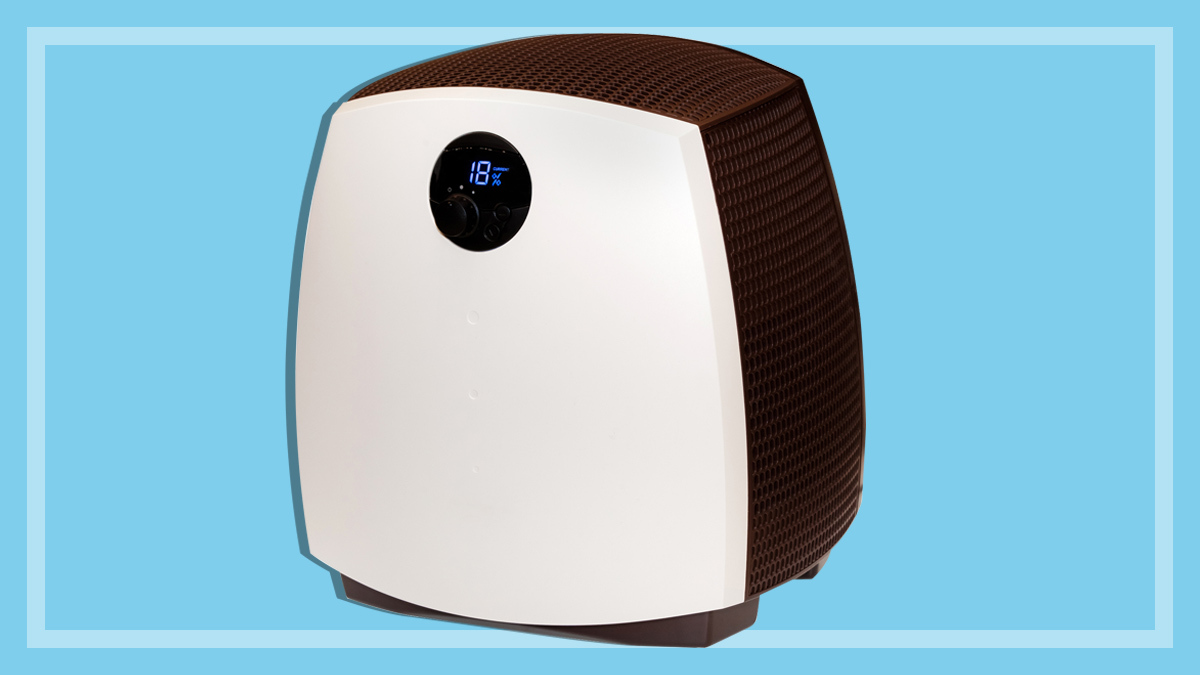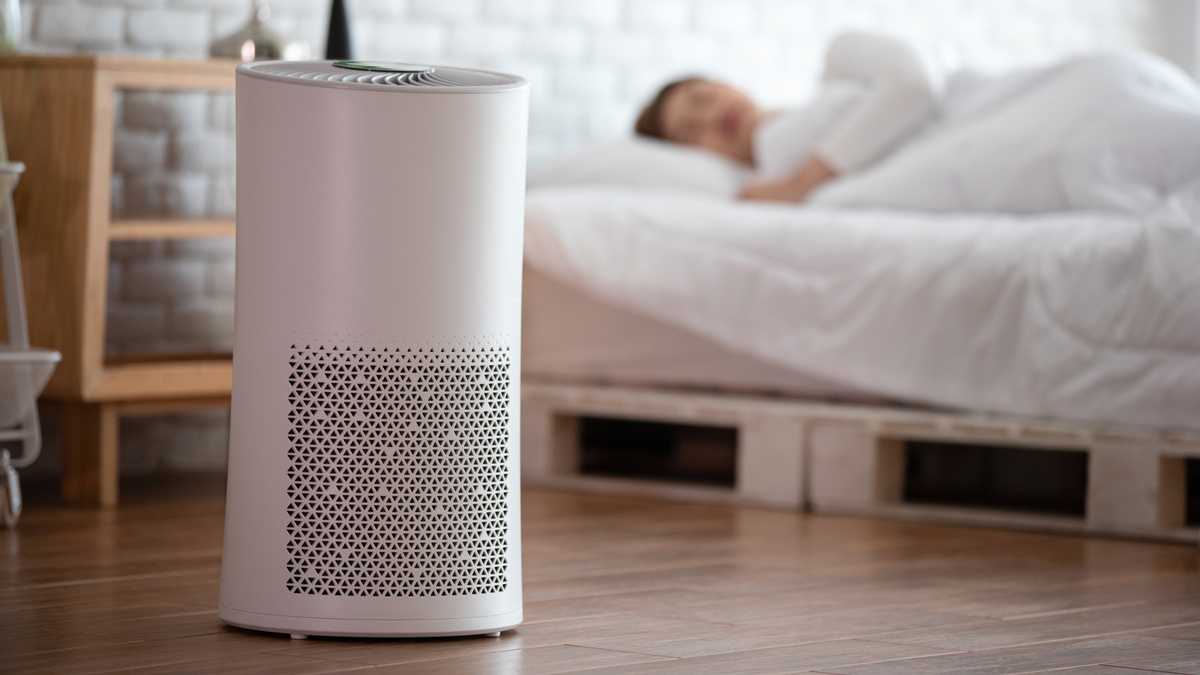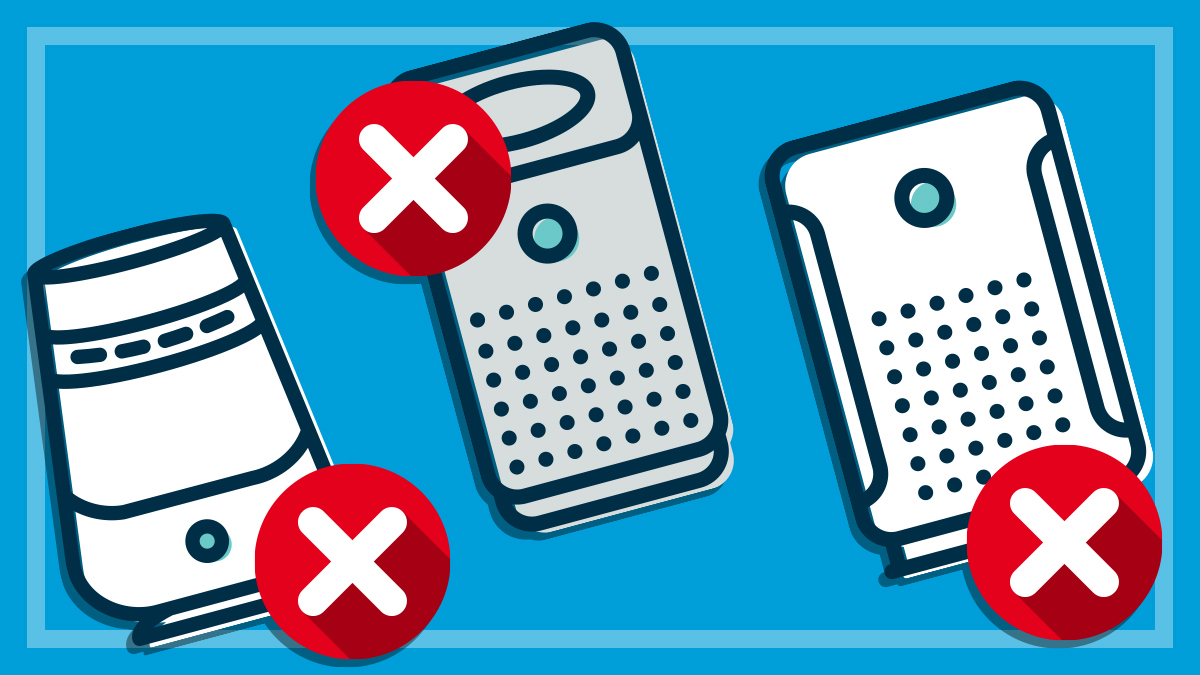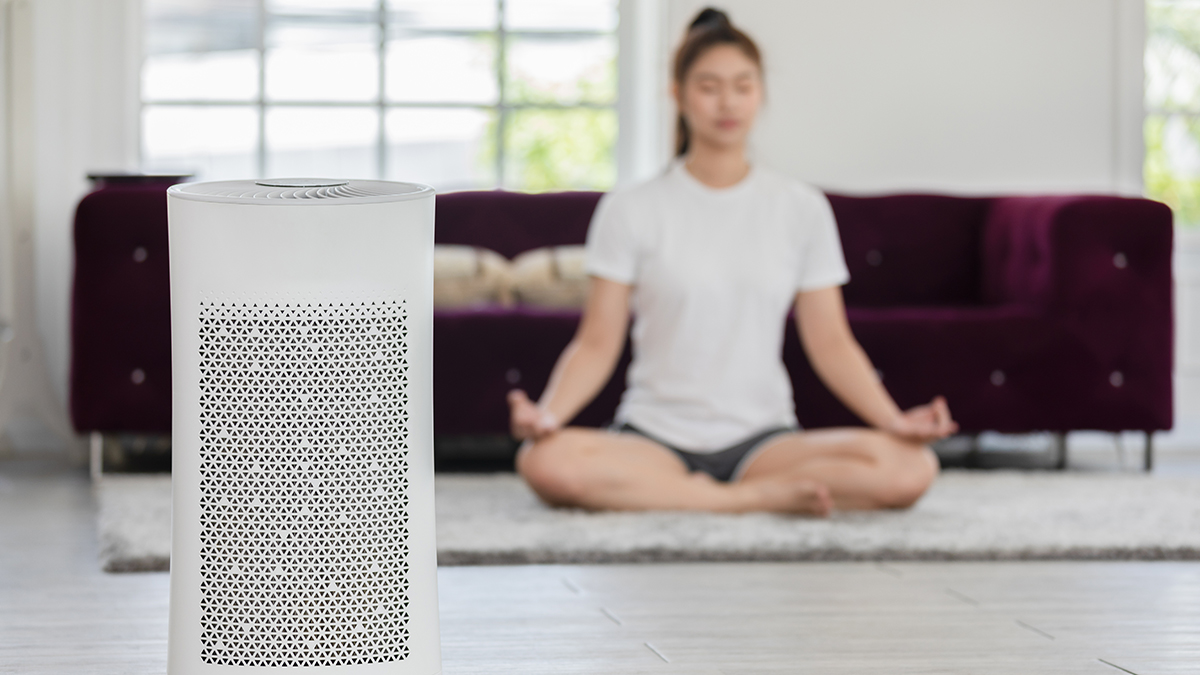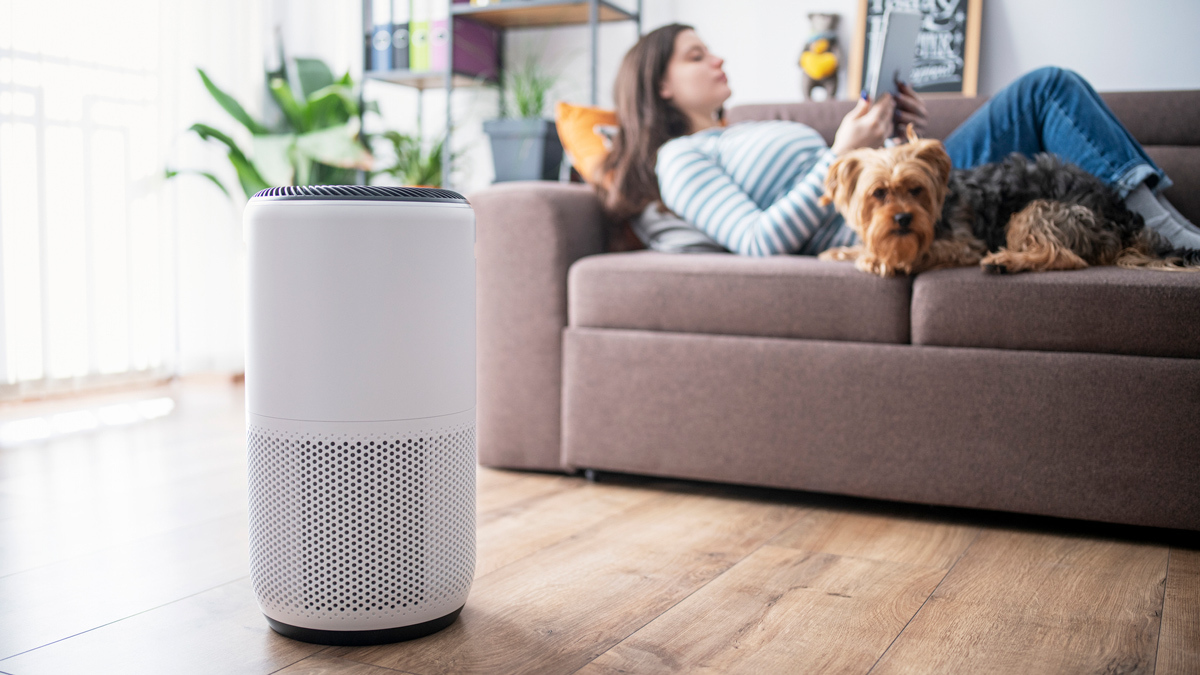Get our independent lab tests, expert reviews and honest advice.
Do air purifiers really work?

Need to know
- Air purifiers have become a popular solution for Australians looking to clean the air in their homes and workplaces
- Air purifiers can help clear the air of dust, smoke, pollutants and allergens, as well as bacteria and viruses but they do have their limitations
- CHOICE experts review over 50 air purifiers from brands such as Dyson, Breville, Ikea, Kogan and more. Become a CHOICE member to access full reviews
As we learn to live with more extreme weather events and a heightened awareness of airborne viruses, air purifiers are a popular option for those of us concerned about the quality of the air in our homes, schools and workplaces.
If you or a family member suffers from allergies, asthma or other sensitivities, you may be also looking for a way to reduce irritants such as smoke, pollen and dust in the air you’re breathing.
Air purifiers are billed as an easy way to improve air quality and reduce pollution, and there is a huge variety of brands, sizes and types available at a wide range of prices. CHOICE testing finds that the performance of different models varies, and we’ve looked at models ranging from a $49 Ikea air purifier up to options that cost over $1500.
So, can air purifiers actually benefit your health… Or are they just another useless fad?
But, do air purifiers actually work or are they just another useless fad?
Here, CHOICE household products expert Chris Barnes takes us through what they can and can’t do, plus some tips for buying.
What can an air purifier do?
1. Help remove common household allergens and pollution
Smoke from controlled burns and bushfires is a reality of living in Australia. Smoke and particulate air pollution is not just irritating; it’s a recognised health hazard, especially for asthma sufferers and people with other health conditions, particularly elderly people and young children.
“Yes, a good air purifier can help clear the air of smoke and odours from bushfires, controlled burning, home wood-fires or tobacco, as well as pollution from nearby roads,” says Barnes.
“They can also help remove common household allergens, such as dust, pollen and mould, that can trigger hay fever, asthma and other respiratory conditions.
“But make sure you buy an air purifier with a HEPA filter, which is a filter that traps very small particles. It’s one of the most important features of an air purifier – not all purifiers on the market have this, so make sure you check the product specifications.”
Look for a product with a HEPA filter, which traps very small particles … It’s one of the most important features of an air purifier
CHOICE household products expert Chris Barnes
The HEPA filter may be used in conjunction with another type of filter such as a carbon, charcoal, ionisation or UV filter, and all have different key uses and effectiveness. For more on different types of filters to look out for, read our air purifier buying guide.
In our expert air purifier reviews, we give individual performance scores for how well each model removes smoke, dust and volatile organic compounds (VOCs) from the air, so you can check each model’s performance against your specific concerns before you buy.
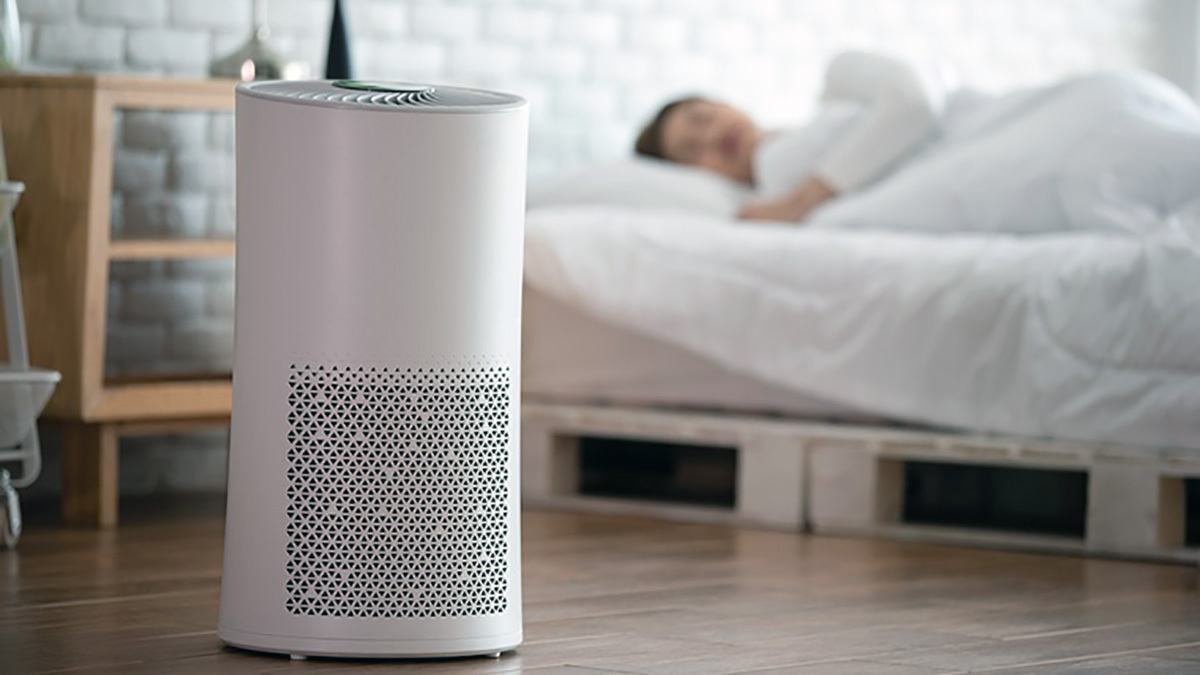
2. Help clear the air of viruses, bacteria and mould spores
While we’d all love a magic appliance that rids our homes of cold, flu and COVID viruses, air purifiers aren’t the perfect solution. But they can be useful.
Viruses such as COVID-19 are usually transmitted by small aerosol particles that are emitted when an infected person breathes out or coughs or sneezes. These tiny droplets can stay in the air for a long time – up to an hour or more.
In the right circumstances, a good air purifier can remove most of these particles from a room’s air.
An air purifier with a HEPA filter can be surprisingly good at trapping viruses and bacteria out of the air
Chris Barnes, CHOICE
“An air purifier with a HEPA filter can be surprisingly good at trapping viruses and bacteria out of the air,” says Barnes.
“The issue is that it can only process what’s in the air that it happened to suck in at the time, so it wouldn’t necessarily process all the air in your home to trap and kill a virus that may be present.
“But, in addition to following health advice such as regularly washing your hands, an air purifier can be worth considering as an extra protection against airborne viruses if you have people coming and going in your house, or if it’s hard to keep your home well ventilated.”
We don’t test the ability of air purifiers to kill viruses in our labs, but for more on this topic read: Do air purifiers trap viruses and other germs?
3. Tell you about your indoor air quality
Most air purifiers have sensors to determine how much pollution is in the air around them, along with other measurements such as indoor air temperature and humidity.
Usually they’ll display this information on the unit or (for Wi-Fi-connected models) in an associated app, perhaps as a detailed particle count or a simple coloured indicator (such as green for good, through to amber and red as the pollution level increases).
It can be very interesting – and useful – to see just how much dust or smoke is in your home’s air, and the sort of activities that add to pollution, particularly if you’re sensitive to these types of irritants.
Simply frying food on a gas cooktop can rapidly create a lot of pollution in the air
For example, simply frying food on a gas cooktop can rapidly create a lot of pollution in the air (even when you don’t burn the food!).
Spraying insecticide, using cleaning fluids, and painting will also add chemicals and fine aerosol particles to the air.
Leaving the purifier to run on automatic, so that it adjusts its speed to suit the level of pollution, is a good idea if the indoor pollution levels can vary a lot. Hearing the purifier’s fan rev up indicates that there’s smoke or other pollution getting into your home.
What can’t an air purifier do?
1. Keep your home free of germs
While an air purifier can be very good at filtering out germs, it can only filter the air in the room that it’s in. Air in other parts of the house might remain untreated. And any virus-laden droplets that settle onto surfaces won’t end up going through the air purifier.
So it’s still very important that you keep up the usual hygiene practices: washing your hands, cleaning hard surfaces and, of course, trying to avoid bringing germs into your home in the first place.
2. Guarantee frequent air changes in your home
Ideally, the air in a room should be replaced by fresh air several times an hour, to prevent the build-up of carbon dioxide, odours, moisture and other pollutants.
The simplest way to do
this in most cases is through natural
ventilation: opening doors and
windows and letting in the breeze.
When that’s not possible, such as
in small rooms with poor ventilation,
or when the outdoor air is too hot or
cold, or too smoky, then an air purifier
will certainly help.
But it’s unlikely to
achieve the same level of air change
in the long term, and it can’t change aspects such as carbon dioxide levels.
Ideally, the air in a room should be replaced by fresh air several times an hour
If you often need to keep your home closed up, or if it’s just very well sealed with no air leakage from windows and doors, then a mechanical ventilation system might be a solution. These usually include air filters to make sure incoming air is free of dust and other nasties.
3. Reliably filter out dangerous chemicals
We test air purifiers for their ability to remove volatile organic compounds (VOCs). These are typically released into the air from paint, furniture, aerosol sprays, cleaning products and so on.
They include a wide range of chemicals that can cause breathing and skin irritation, headaches and worse. Common culprits are formaldehyde, ammonia, benzene and acetone (we use acetone in our tests).
Although some air purifiers are specifically designed to remove such chemicals, most are not very effective, and several are pretty useless at this particular task.
4. And… you’ll still need to dust your home
Sadly, however good the air purifier is at removing dust from the air, there’s always more that settles on the furniture and the floor. Dusting, vacuuming and mopping will still be a necessary chore.
So, is it worth buying an air purifier?
Whether an air purifier is worth buying and how much you should spend on one depends on things such as what you’d like to use it for and the effectiveness of the product you buy.
“We’ve reviewed a range of air purifiers from different brands, ranging in price from $49 to over $1500,” says Barnes.
“We measure the clean air delivery rate [CADR] of each air purifier to assess how well it clears particles of dust, smoke and other volatile organic compounds [VOCs] from the air – and use that information to give each model a score based on its performance and ease of use.
We are seeing some disappointing products in our labs, some which barely clear anything from the air
Chris Barnes, CHOICE
“The performance of different brands and types of air purifiers definitely varies and we are seeing some disappointing products in our labs, some which barely clear anything from the air.
“How well a model will perform in your home can be affected by things such as its relative size to the size and shape of the room you’re using it in, as well as how many, and which, pollutants are in your air.”
How to choose the right size and capacity
Size really matters when it comes to air purifiers. Our experts recommend you look especially closely at the advertised CADR and consider the size of the room you’ll be using it in.
Most models will advertise what capacity room they’re suited for. You basically want to ensure that the air purifier works hard enough – or has a CADR that’s high enough – so it circulates the full volume of air in your room to clean it thoroughly, otherwise it won’t be doing the job you bought it for.
Generally, the higher the CADR, the better. But keep in mind this standard is tested using very specific settings (with the purifier unit placed in the centre of the room and set to its highest speed) and only relates to the removal of three pollutants: dust, tobacco smoke and pollen.
It may be worth getting a model that’s rated for a slightly larger room than you need
Barnes suggests it may be worth getting a model that’s rated for a slightly larger room than you need.
“That can mean the purifier will clear the room’s air faster on its highest setting, but still comfortably keep the air clear on its lowest and quietest speed (good for when you’re trying to sleep),” he says.
Find out more about CADR and the Dyson-specific test method known as POLAR, in our air purifier buying guide.
Ongoing filter costs
If you’re considering buying an air purifier, make sure you take into account the cost of replacement filters, which can add up quickly.
Costs vary between brands and models. Annual filter replacement costs for the models we’ve tested range from as little as $12 to over $700 per year. Those costs are based on the manufacturer’s claimed filter replacement period; your actual filter replacement costs will depend on how often you run your purifier and at what setting.
Read more about our tips for maintaining your air purifier, which includes guidance on how often you should clean and replace the filters, as well as how much they cost for leading brands like Dyson, Samsung and Philips.

